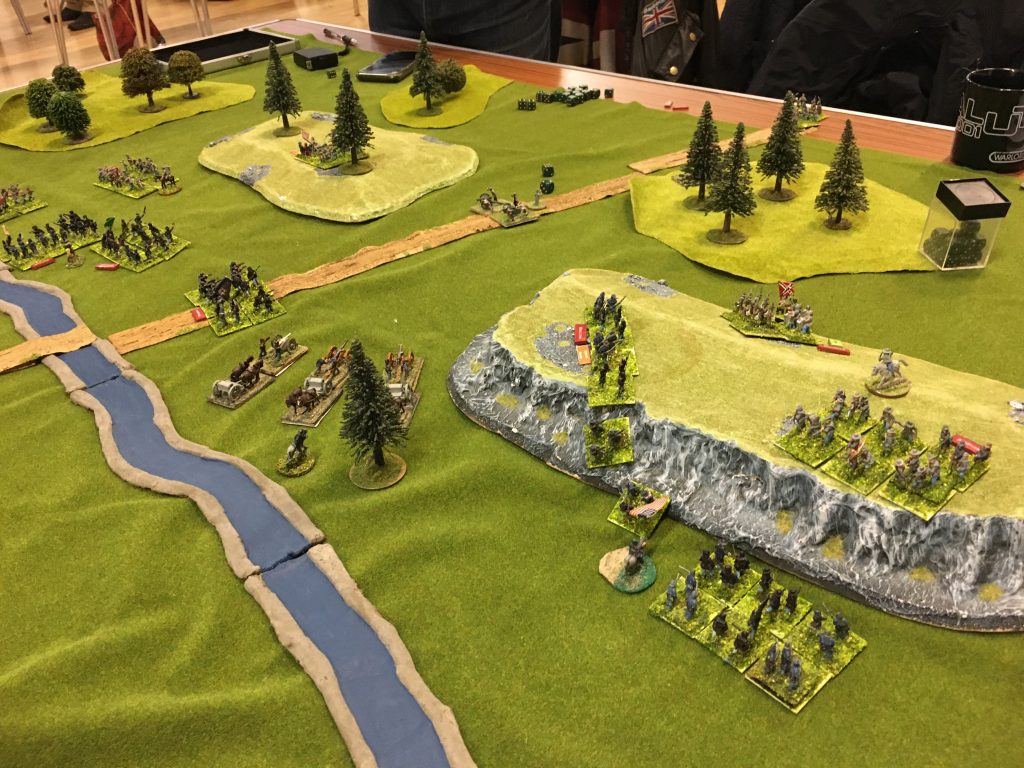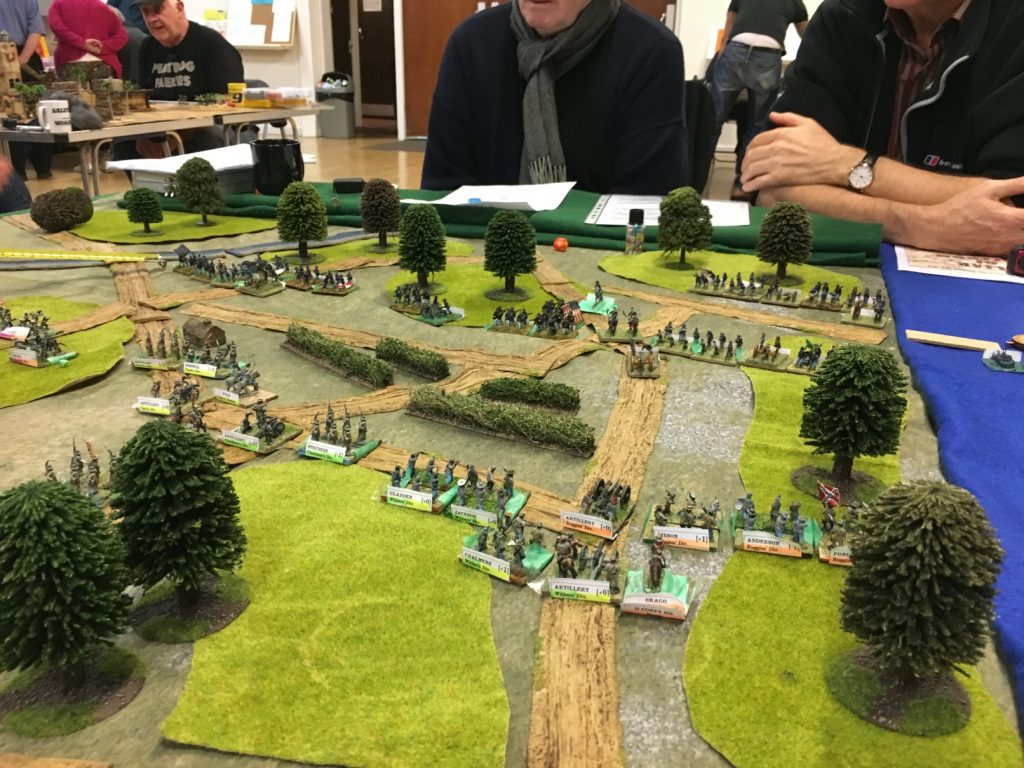
Last night at the club we played a game put on my regular club colleague Terry, using his American Civil War figures, and based loosely on the battle of Peachtree Creek. We went back to the original, unmodified Bloody Big Battles rules. This is interesting since I’ve spent so much energy rewriting these rules for the Napoleonic era, so that they are now far distant from the original.
The game confirmed my contention that BBB is fine for the era it was designed for (the second half of the 19th Century) but flawed for earlier battles. The game played very well. There were four of us with half a dozen infantry units a side, plus artillery. We easily accomplished five moves, at which point it was clear that the Confederate attack had failed, in spite of relative unfamiliarity with this version of the rules.
What is so different about this era? First is that firing is much more important. Infantry weapons are more lethal because the are effective over a much longer range: 9in rather than 3in, reflecting the use of rifled muskets. We represented two Union units as having early breech-loaders, which gave them extra lethality at short range. This extra range meant there was much more firing, featuring occasional base losses. Artillery was more effective too, especially rifled guns. There was more of it too – in original BBB each base represents twice as many guns as in our Napoleonic rules. One Confederate division was wiped out by artillery fire alone.
We were left with one of our frustrations with these rules: inflicting a disruption on a unit has no effect if it is already disrupted, rendering much fire ineffective. But in context that seemed to matter less. One aspect of the rules was striking though: the effect of the “out of ammo” provision, which happens when units throw an 11 or 12 in firing. In our rules we have replaced this with a disruption, which is not far from mimicking its effect on artillery. But for infantry the effect is halve its firepower and it is very hard to shake: the unit must spend a move out of range of the enemy. This is nearly impossible in such a closely-fought game with such long weapons ranges. It is not a bad way of representing the progressive fatigue of troops, when the other method, base loss, is more drastic. Both units of breech-loaders suffered this, though not before some serious damage had been done to their opponents. This was quite neat example of play balance: not allowing an advantage and lucky throwing to get out of hand.
The game itself revolves around lots of dice throws, whose effects can be dramatic: movement throws, firing and melee. However over time these tend to balance out, and the rules overall do feel well constructed and balanced. It is interesting that when applying them to a slightly different era that this balance seemed to fall apart, especially when we tried to adapt them to the rather different role played by cavalry, and the effect of cavalry on infantry.
The small arms ranges used in this game are interesting. Nine inches is about 1,350m, or over three-quarters of a mile. Rifled small arms were technically effective at these ranges, but I doubt that such long range fire was important, and the ranges have been extended for games purposes. They doubtless represent a rather more dispersed use of forces than represented by the bases on the table. On that basis the Napoleonic ranges could be extended to six inches – and yet that would run counter to the feel of the era. Napoleonic battles were largely about tightly managed masses of infantry (and cavalry) engaging at relatively close ranges. Skirmishers were used extensively, but the three inch range (450m) captures this, as the actual effective range was under one inch.
Our conclusion is that we will use original BBB for future ACW games. If we ever get into the Bismarck Wars, we can use them there too. I did try them in a solo game for an 1866 encounter between Prussians and Austrians, and they were similarly entertaining then. But we’ll use our new rules for Napoleonics: we plan another game of these next week.
